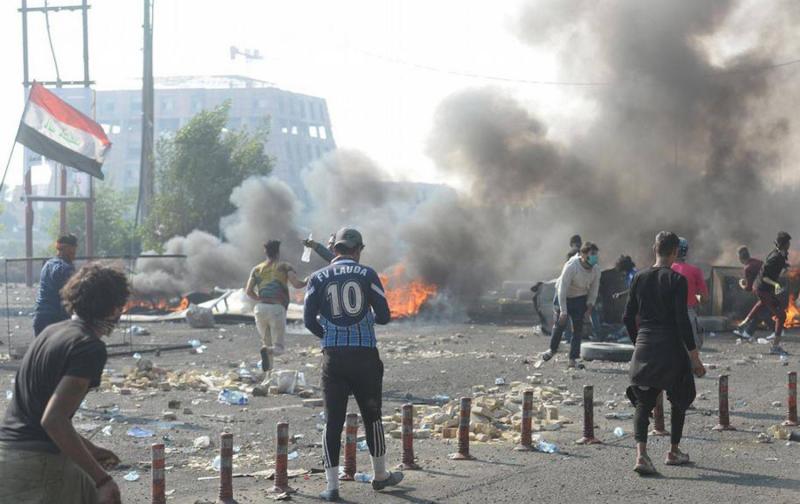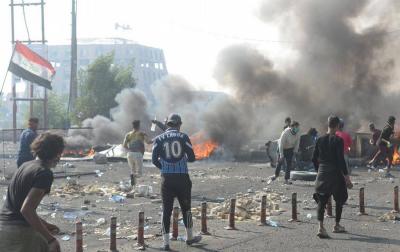Protesters in southern Iraq have escalated their ongoing demonstrations that began last week, in response to poor services and a lack of job opportunities, particularly in the provinces of Dhi Qar and Al-Muthanna, with the latter being the most impoverished according to government data. The movement is expected to extend to other provinces in the south and center unless the protesters' demands are met.
Last night in Nasiriyah, the capital of Dhi Qar province, a massive demonstration was organized by a number of graduates protesting their living conditions and high unemployment rates among them. The protesters attempted to storm the governorate building and reached its outer courtyard, causing significant damage to governmental vehicles on-site, as well as injuring two protesters.
In October 2019, Iraq witnessed widespread protests known as the "October Revolution," which resulted in hundreds of deaths and thousands of injuries among protesters. This movement sparked in the central and southern provinces, with Dhi Qar also being a significant stronghold of popular activism in the south at that time.
### Renewed Demands
The demands of the popular movement focus on political and economic reform, ending sectarian quotas, abolishing provincial councils, fighting corruption, providing job opportunities for unemployed graduates, and restoring the sovereignty and dignity of the state. Another goal of the movement is to "not make Iraq a backyard for neighboring countries or a battleground for conflicting states," as well as to pay attention to national industry, agriculture, and production.
### Chronic Electricity Crisis
Hundreds protested in the city of Al-Diwaniya, southern Iraq, against weak electricity supply, after they blocked a street with tires. In Najaf, adjacent to Al-Diwaniya, eyewitnesses reported a large demonstration in the city center due to poor electricity supply and equipment in the province. In the capital, Baghdad, citizens also demonstrated in protest of the continuous power outages.




